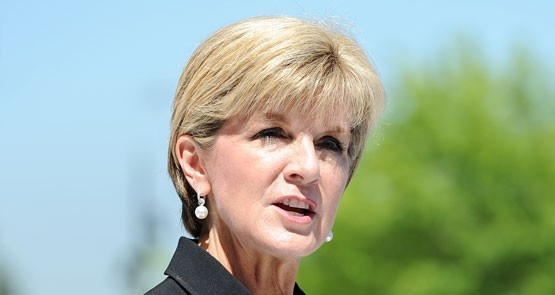Foreign Minister Julie Bishop’s enthusiasm for passport-less travel based on biometrics stored in “the cloud” will undoubtedly come true one day.
It will be in a time when reaching the airport involves driverless, as well as taxless, ubers, or driverless trains using stations where just looking at the eye-screen will deduct the fare from your cardless public transport pass, since that will be in the cloud too. (Myki and Opal cards will be relics in museums.)
After you hurtle down the roads, streaking through intersections without traffic lights where everything misses everything else by a finely calculated number of millimetres, the entry to the terminal or lounge will be similarly efficient.
You will just glance at an eye- or body-recognition panel and the computers will let you pass. If, for some reason, there is a problem with your entitlement to your pre-paid seat on the flight or lounge access, a helpful robot will determine your fate, assisting you out of the airport or onto your flight, pilotless of course, as the algorithms and artificial intelligence services determine. Think of them as robo-bouncers, or facilitators, as your presence may be deemed to be.
The problem with Bishop’s fairy-floss view of the future is the reliability and failure recovery issues that would need to be fixed, not to mention universality of availability and standards.
Australia’s Border Farce is totally inadequate when it comes to the reliability of even the crude e-passport readers of 2015, and there is no sign that anyone in authority, if there is such a person, is prepared to make public commitments as to when the issues will be fixed and what guarantees of future reliability will be made and enforced.
The suggestion that Australia and New Zealand should trial passport-less travel using cloud-stored biometrics (once we actually master the pathetic state of the current technology) is incredibly dumb.
It is much simpler, and failure proof, to remove Australia-New Zealand border controls completely using a Schengen-type arrangement. Once a non-Australian or non-NZ citizen enters either country they have entered both, and can move freely between them, subject to their visa conditions, until they depart from either.
People would still carry their passports when entering or leaving the combined borders of Australia and New Zealand. But there isn’t any reason why crossing the Tasman should be any different to crossing Bass Strait or driving across a mainland state border. For anybody.









Crikey is committed to hosting lively discussions. Help us keep the conversation useful, interesting and welcoming. We aim to publish comments quickly in the interest of promoting robust conversation, but we’re a small team and we deploy filters to protect against legal risk. Occasionally your comment may be held up while we review, but we’re working as fast as we can to keep the conversation rolling.
The Crikey comment section is members-only content. Please subscribe to leave a comment.
The Crikey comment section is members-only content. Please login to leave a comment.